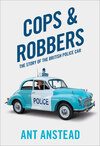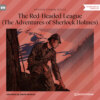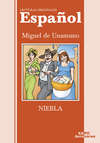Kitabı oku: «Cops and Robbers», sayfa 8
Morris Minor 1000 ‘panda’ racing car
Guitarist and singer Chris Rea is well known for being a petrol head and, partly because of his Italian ancestral heritage, having a real passion for Ferrari – so much so that he made a film about his F1 hero, Wolfgang ‘Taffy’ von Trips, and commissioned a replica of his famous 1961 Ferrari 156 ‘sharknose’ F1 racing car. However, Rea has also raced in various series over the years, often but not exclusively in a selection of Lotus racers. He also worked occasionally as pit crew, anonymously, for the Jordan team in the early to mid-90s just to be involved (massive respect for that), and has owned a number of interesting road cars. However, as his song lyrics sometimes attest, he’s a man with a dry sense of humour and one of his current racers demonstrates that perfectly: a racing 1959 Morris Minor ‘panda’.

The car on the grid at Goodwood with other Historic Racing Drivers Club (HRDC) racers. The police sign was removed before the race actually commenced.
The car uses a BMC A-series engine as it did originally, but seriously modified and producing near three times its original output, as the 1.75-inch twin SUs and large oil-cooler attest.
Rea bought the car to enter historic racing, having raced as a guest in a couple of HRDC events, and decided he wanted to enter a Minor rather than one of the all-conquering A35s or A40s that dominate the smaller-engine class. HRDC organiser Julius Thurgood found this example rusting away in North Wales, removed it from that particular road to ruin and entrusted it to Alfa Romeo preparation experts Chris Snowdon Racing in November 2014 to be turned into a racing car. The project took the equivalent of one month’s full-time work and, because it was so rusty, ten days of welding alone. Rea apparently briefly considered restoring it as a road car once he realised its police history but decided instead to follow the original plan and nod to the car’s past by finishing it in a panda livery and entering it under the number 999. ‘Pc Rea 6149’ is painted on the doors in reference to Rea’s 2005 song ‘Somewhere Between Highway 61 & 49’.
Now I can hear every reader screaming, it can’t be an ex-panda car if it’s a 1959 as it would have been seven years old, at least, when the livery was introduced! And you’re right, a little liberty has been taken here, but the car is a genuine ex-police car which now provides fun for competitors and spectators alike at events such as the Goodwood Members’ Meeting, so I say good on him. It also shows just how iconic that panda car livery is, at least to a certain generation, plus it was kinda fun seeing Chris’s police car chase me on the track in my rear-view mirror …

The Mini, without question one of Britain’s greatest ever cars, was also very popular with the police in all its variants. Whether it was an Austin 850 saloon, a van, a Clubman estate, a Countryman estate, Leyland or Morris version, or even the Mini Moke, just about every model was used by a force somewhere in the UK. Bedfordshire and Luton Constabulary used large numbers of Minis before the locally produced Vauxhall Viva HB arrived, as did Durham, who chose to paint theirs black and white. Greater Manchester, Norfolk, Merthyr Tydfil, North Wales and Merseyside Police all had Minis, with their minuscule 850cc engine. From 1967 to 1979 the Hampshire Constabulary had no fewer than 900 Minis in service – a record for one make of car that still hasn’t been equalled. The Mini Moke, incidentally, was used by the Devon Constabulary and by the Dyfed-Powys Police, which must have provoked some strange looks from the public as the TV series The Prisoner was on at about the same time and starred the same car in a distinctly more sinister role.
Driving police Mini panda cars could be a very dangerous experience for the unwary copper. Nothing to do with the vehicle’s handling or its performance, but everything to do with the driver’s colleagues. Police officers are amongst the worst wind-up merchants on the planet (together with the military and nurses!) and are constantly thinking up new ways of getting one over on their colleagues. The Mini gave them the ideal tool; it became imperative that at the start of your tour of duty, having got the keys to the Mini panda car, the very first thing you did on opening the doors was to check under the seats. You had to lift the hinged front seats very carefully to check if there was a glass phial stink bomb placed beneath the seat frame. If you failed to check it and merely jumped in the car and sat on it, you were guaranteed a very smelly eight hours!
Two police officers were sent to a domestic dispute at a house and arrived in their Mini panda car. It was such a regular occurrence at this house that only one of them bothered to get out of the car whilst the driver stayed put. But on this particular day it all went horribly wrong. The door to the house flew open and the male occupant came straight out and plunged a large knife into the officer’s face before shutting the door again. The injured officer was bundled into the Mini by his colleague, who didn’t wait for an ambulance and decided to drive straight to hospital. With the knife embedded just below his eye, all the officer could see was the handle bobbing up and down as his panicked colleague drove the Mini panda car with blue light flashing and two-tone horns blaring the four miles across the city to casualty. He drove it as hard as he could with no holds barred, the wrong way down a one-way street, along a pavement, on two wheels around a roundabout with cars and pedestrians leaping out of its way. After emergency surgery the officer later revealed that he was more frightened by the drive in the Mini than he was about the stabbing itself!
The Hillman Imp proved almost as popular with the likes of Kent, Glasgow City, Somerset and Bath Constabulary, Norfolk Joint Police, Newcastle Police and the Dunbartonshire Police. The Somerset cars were somewhat different in that they ordered theirs in the standard Rootes blue, which was a little darker than the light blue that everyone else had adopted. Kent County Police didn’t bother painting the doors white on their early Hillman Imps, although they did eventually succumb to the full colour scheme. However, the prize for the ‘best-looking Imp in the panda class’ goes to the Dunbartonshire Police, who of course were not a million miles from where the Imp was manufactured in Linwood, Renfrewshire. Being canny Scots, they dreamt up a money saving idea to get themselves two pandas without the need for any special orders or additional paint jobs. The solution was to buy two cars – one white, the other one blue – then swap the doors, bonnet and boot lids over. Brilliant. But they did use some paint – bright yellow to be precise, on the roof. The roof colour was complemented by large ‘Wide Load’ signs placed front and rear. The cars were very high profile and gained the nicknames of Pinky and Perky; they were used to escort abnormal loads along the A82 Loch Lomondside Road from Dumbarton to Fort William during heavy construction work at Loch Awe and became tourist attractions in their own right. Although not strictly panda cars (they were actually Traffic cars), the livery alone makes their inclusion here a must. Incidentally, the diecast model manufacturer Corgi made a superb two-model set of Pinky and Perky, which you can occasionally pick up online.

Hillman Imp panda cars
In 1971 Northumberland Constabulary made a drastic error in buying a number of light-blue-coloured Hillman Imp saloon cars to be used in all areas as panda cars. Four burly giant police officers shoehorned into these tiny cars was always going to be a challenge, but the real challenge came whenever the police needed to make a stealthy approach to the scene of a crime. The Hillman Imp’s aluminium, rear-mounted engine (which had its design roots from a Coventry Climax Fire Pump engine) made a distinctive high-pitched whine. Thieves could place lookouts keeping toot, who could hear police cars approaching from afar and make good their escape. The only thing that officers could do to overcome this was to try to approach the scene of crime from an uphill direction, so that they could freewheel to the scene of crime to surprise offenders and catch them red-handed.
Birmingham City Police appear to have been the only force to have used the Austin A40 Farina for its panda car fleet, purchasing dozens of them in 1967 from the local Longbridge car plant. This was a move obviously designed to help with local community relations, as well as to clear some stock at Longbridge of what was by then an out-of-date car coming to the end of its life, thus it was probably available at a heavily discounted price. These cars were fitted with an illuminated roof box and a blue light together with two-tone horns. This was an unusual practice, although not unique. Some forces fitted their panda cars with emergency equipment to assist them in getting to an incident quicker, even though the drivers of such cars had only ever received basic driver training.
By the late 1960s and early 1970s a lot of our city and borough forces had amalgamated into the larger county forces, and at about the same time a variety of new panda cars came on stream, including the replacement for the Morris Minor: another Alec Issigonis masterpiece – the Austin 1100. The Met bought loads of them and they were just as popular with West Midlands, Gloucestershire and the new Devon and Cornwall Constabulary. The 1100 had plenty of interior space and its ride was very smooth thanks to its hydrolastic suspension, but it faced some serious opposition from Ford’s replacement for the Anglia 105E: the all-new Mk1 Ford Escort 1100.

Introduced in 1968, the Mk1 Ford Escort 1100 was an instant success with the public and the police. It was cheap to buy and run, had decent performance and enough space inside. It proved itself to be extremely reliable and cost-effective and officers enjoyed driving them. Forces like Dorset, Merseyside, Hampshire, West Sussex, Lancashire, Suffolk, Wiltshire, Thames Valley, Stirling and Clackmannan Police all used this new Ford product, and most stuck with it when it was later replaced by the Mk2.
The case of the pink Ford Escorts
In 1978–79 Britain was hamstrung by the winter of discontent, so-named because of strikes in the public sector that took the unions head to head with Jim Callaghan’s by then fatally crippled Labour government, which in turn led to Mrs Thatcher’s first election victory. However, the strikes also affected the car industry, and one of the longest-running disputes was at the massive Ford factory in Dagenham. At this time Northumbria Constabulary was wedded to Ford Escorts because it made sense for their maintenance workshops to be set up to deal with only one type of vehicle. They also had been afforded a good deal in terms of the quantity of cars purchased each year. The problem arose when Ford, because of the long-running strike, could not furnish any white-coloured police cars, and in desperation the police, very reluctantly, accepted two pink-coloured panda cars from Ford. One of these cars was placed in Gosforth, a suburb of Newcastle upon Tyne, while the other one ended up at Prudhoe, near Gateshead. The end result was police officers drawing lots to avoid driving the pink panda, and lots of wolf whistles and jokes of dubious taste while they were on patrol if they lost. Perhaps this was a reflection of the attitudes of the period as well …?
Meanwhile, Vauxhall updated its lacklustre Viva HA model, which hadn’t been looked at by the police, and gave us the Viva HB, which was a direct rival to the Escort. Again, it was cheap to buy and run and appeared to fit the bill (pun intended! You’re welcome …) perfectly. It goes without saying that Bedfordshire Constabulary bought the Viva, as did the neighbouring Hertfordshire, together with Cheshire, Lancashire and the Ayr Burgh Police in Scotland, who did exactly the same as Dunbartonshire Police did with the Imps and bought vehicles in either white or blue then swapped all the opening bits over to obtain that panda car effect. Vauxhall knew they had a winner on their hands and produced a wonderful brochure selling the HB Viva’s panda car potential.

Without doubt the blue and white scheme worked. It grabbed the public’s attention – which was the whole idea, of course – and so a number of forces started to experiment by painting some other vehicles that were never intended to be panda cars in blue and white. Lancashire, for example, took several of its Mk1 Transit Section vans (station vans) and repainted them. The Met Police even utilised a couple of ageing Morris J Series vans in the early 1970s as mobile Careers and Recruitment Offices by painting them up as pandas simply to draw people towards them. Other forces started playing around with the scheme as well. Thames Valley Police had white Mk1 Escorts with dark-green doors, whilst Suffolk Police opted for light-blue doors on white-bodied Escorts. The Renfrew and Bute Constabulary couldn’t quite make up its mind when it took a white Hillman Imp, painted the doors dark blue and then put orange stripes along its sides! Birmingham City Police repainted one of their Austin A60 area cars from black to panda livery with a curious breaking up of the colour on the C-pillars. However, they were used as supervisory units by sergeants in charge of local sub-divisions, who would use these oversized panda cars to check up on the PCs in their standard panda cars and to meet them at certain ‘points’ on their beat. This was an old-fashioned idea left over from the days of foot patrols, when sergeants would meet their officers at a ‘point’ on their beat at a certain time to ensure that they were actually doing their job in their respective area. The sergeant would then sign and date the officer’s pocket notebook. Talk about policing the police!

As the 1970s progressed, other new cars entered the market. We saw the likes of the Vauxhall Chevette (my brother had a brown one) make the odd appearance in forces like Cheshire, Norfolk and Lincolnshire. Ford’s new Fiesta got used by Northumbria, Hertfordshire and West Yorkshire Police. The Vauxhall Viva HC model was also reasonably successful but not quite as much as its predecessor. By the late 1970s one car stood head and shoulders above the opposition; Ford’s new Mk2 Escort in 1.1 Popular trim made for a great panda car. It was light and easy to drive, with sound reliability – even if the driver’s seat tended to collapse under the weight of an overweight policeman! Huge numbers of them were used by the Met, Cambridgeshire, Gloucestershire, Hampshire, Dorset, North Wales, Devon and Cornwall, Essex, Hertfordshire and the Lothian and Borders Police in Scotland, who incidentally still have one in their museum.
Some of the last cars to be adorned in the two-tone livery were the Austin Allegro and the Talbot Sunbeam. The Allegro was used extensively by the Met and in forces like West Midlands Police, who now ordered theirs in plain blue, but instead of painting the doors white they opted to place a large white sticker on the doors with the word ‘police’ on it. The Talbot Sunbeam wasn’t as popular as it could have been, due to its cheap build quality and poor reliability, but the Met Police and the likes of Cumbria and Sussex did use it. Meanwhile, the Avon and Somerset Police used the Hillman Avenger 1500HL in blue and white as a response unit rather than an outright panda car. We were beginning to see a blending of roles, not just in the Bristol area but in most other counties as well.
By 1979 financial constraints were hurting the public-sector purse strings and police fleet managers had to look at ways to save cash. Thus the panda car died. Well, the livery did, but not the concept itself, which lives on to this day in most forces. Police still use run-of-the-mill, cheap, small-engine cars to do the basic running-around policing we now call anything from sector policing to community policing. Along the way we have seen cars like the Vauxhall Astra in all its variants, the Ford Fiesta and Focus, the Peugeot 306, 309 and the 208, the Rover 220 and several others, no doubt. In twenty-first-century Britain it’s the Ford Fiesta and the Vauxhall Corsa that seem to be the current favourites. But thanks to the Home Office the entire concept has now been lost because of its insistence that all police vehicles carry the same livery nationwide, no matter what that vehicle’s role might be. You can read the full story elsewhere in this book, but basically in the late 1990s the Labour government introduced the blue and yellow Battenburg livery to all emergency service vehicles. It wasn’t well received and took some forces 20 years to comply. So now we have everything from a Ford Fiesta through to a BMW X5, from motorcycles to Mercedes-Benz Sprinter vans all carrying the same graphics. In some ways the government’s argument echoed that of Colonel St Johnson all those years ago, in that they wanted the cars to stand out and to be easily recognisable by the public – including foreign tourists – as a police car. But nowadays it seems others are using it, too; for example, Highways Traffic Officers use black and yellow Battenburg, and every security company and dog warden known to man decorates his van with Battenburg, as do your local recovery garages, emergency doctors and many others.
The original concept was brilliant and, more importantly, it worked very well indeed and without doubt changed the face of British policing forever. The only thing that hasn’t changed is that Oxford Dictionary definition!
The Noddy Bike
The Unit Beat Policing, or UBP, scheme changed policing in the UK as well as providing a whole new livery and type of police car to talk about in this book! However, the very beginnings of the concept of mobile policing using a cheap economical vehicle so that a wider area could be covered was the quite wonderfully named ‘Noddy Bike’ scheme. From the early 1960s bobbies in selected areas were given Velocette LE motorcycles in an effort to achieve greater mobility. The name came about because those constables riding them were exempt from saluting senior officers, this being a potentially lethal practice while riding a bike at 40mph! They were allowed, instead, to merely nod their head, a massive change in protocol which, if we had the time and space, could be argued to be the beginning of the end of the old police services’ quasi-military structure … The LE (which amazingly enough apparently stood for ‘little engine’) was introduced in 1948 and was a strong, tough little bike with a smooth and very quiet running transverse, water-cooled, side-valve, flat-twin, 4-stroke engine of, initially, 149cc, although later versions used a 250cc unit. It wasn’t a bike for bikers but rather a machine for transport, and it added as much civilisation and comfort to the motorcycling experience as it was possible to do in that era, originally being fitted with a hand-operated starting lever, for instance, although this design was later dropped in favour of a kick-start. It started the police on a road towards mechanised movement for beat bobbies, but was used mainly in rural areas and by no means exclusively to move between beats in the way the UBP was developed. It’s important to say it wasn’t the start of panda cars, although people often speak of them as such on the web, but it’s equally fair to say that they were a signpost on the road towards the panda car, and no discussion of this policing theory and practice is complete without at least a nod to the Noddy bike.
Ücretsiz ön izlemeyi tamamladınız.










